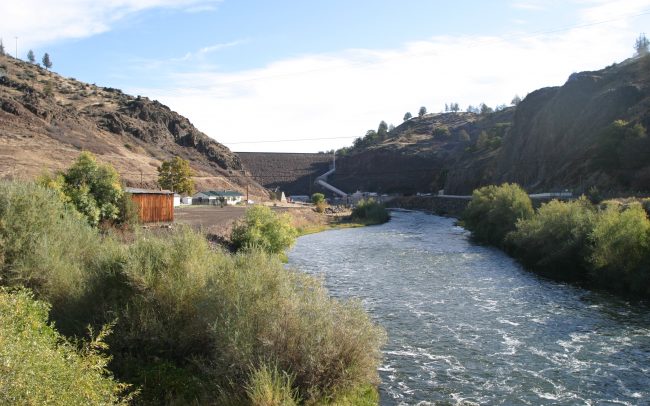Dam Removal
For over a decade, Stillwater Sciences has been actively involved in advancing the science behind dam removal as a restoration approach, including contributions at national workshops on dam removal. We use models and site-specific field data to provide our clients with a comprehensive understanding of the short-term and long-term physical and biological impacts of dam removal at varying spatial scales. This information is then used to determine likely impacts on valued native flora and fauna and the potential for downstream flood risk, and so allow stakeholders to understand the competing issues and benefits of dam removal. Our goal in these analyses is to provide the most cost-effective and ecologically-sound method for removing dams, specifically tackling the issue with the following tools and approaches:
Numerical Modeling
Our customized and tailored sediment transport models can be used to:
- Predict changes to downstream stream bed conditions, including surface texture, elevation change, and sediment dynamics
- Evaluate the relative benefits of different dam removal strategies (e.g., staged removal versus one-time removal)
- Assess the impact of a naturalized flow regime on water quality and temperature (BasinTemp©)
Physical Modeling
We use a UC Berkeley/NCED flume research facility in Berkeley, CA to conduct research projects that:
- Replicate site-specific field conditions for examining the impact of various dam removal approaches on local changes in the stream bed texture and elevation
- Calibrate numerical models for determining the long-term impact of dam removal on site-specific field conditions
Pre- and Post-Removal Monitoring
We use standardized monitoring techniques for physical and biological variables to:
- Determine baseline conditions prior to dam removal
- Calibrate numerical models used to predict the effects of dam removal
- Assess the validity of model results for post-dam removal conditions to allow for adaptive management
Planning and Impact Assessment
Understanding short- and long-term impacts of dam removal at various spatial scales allows us to develop dam removal plans that meet project-specific ecological goals. This impact assessment can include:
- Geomorphic impacts– changes in sediment delivery dynamics, channel morphology change, changes in flooding frequency and floodplain inundation, predicted impacts to downstream in-channel and floodplain infrastructure
- Water quality impacts– changes in turbidity and nutrient loading, downstream concentration of metals and/or toxins from released dam reservoir sediment
- Biological impacts– effects of restoring fish migration pathways, sediment transport effects on the quality of salmonid spawning and rearing habitat, fine sediment effects on macroinvertebrate populations, effects of morphological change on in-channel and riparian vegetation




